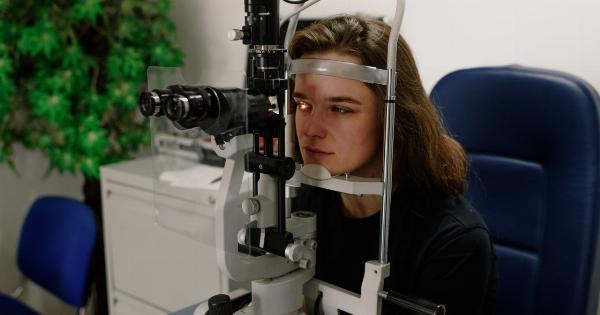Over the past few years, electronic cigarettes, better known as e-cigarettes, have gained significant popularity as an alternative to traditional tobacco smoking.
These devices were initially marketed as a safer, cleaner, and less addictive option for smokers. However, a recent outbreak of a mysterious respiratory illness has raised serious concerns about the safety of e-cigarettes and the potential hazards they pose to public health.
In the picturesque, historic city of Venice, Italy, this enigmatic disease has wreaked havoc, leaving health officials and residents searching for answers.
The Emergence of E-Cigarettes
E-cigarettes first appeared on the market in the early 2000s, primarily as a smoking cessation aid. Manufactured to resemble traditional cigarettes, these battery-powered devices work by vaporizing a liquid containing nicotine, glycerin, and flavorings.
As e-cigarettes gained popularity, manufacturers began introducing more sophisticated and customizable options, such as vape pens and mods. These devices allowed users to control the temperature, nicotine concentration, and even flavors of the vapor they inhaled.
The Appeal of E-Cigarettes
Proponents of e-cigarettes argue that they offer several advantages over traditional cigarettes. One of the main appeals is the absence of harmful combustion byproducts typically found in cigarette smoke.
Instead, e-cigarettes produce an aerosol, often referred to as vapor, which users inhale. This vapor is believed to be less harmful than the multitude of toxins released by burning tobacco leaves.
E-cigarettes are also touted as a means of reducing secondhand smoke exposure. Unlike traditional cigarettes, which emit toxic smoke, e-cigarettes primarily release water vapor, thereby decreasing the health risks associated with passive smoking.
Additionally, the ability to customize nicotine levels allows users to gradually reduce their dependence, potentially aiding in smoking cessation efforts.
The Venetian Outbreak
Despite the perceived benefits, a recent outbreak of a mysterious lung disease in Venice has cast a shadow over the safety of e-cigarettes.
Health authorities in the city noticed an unusual surge in cases of severe respiratory illness, primarily affecting young adults who reported using e-cigarettes. Symptoms included shortness of breath, chest pain, cough, and fever, with some patients requiring intensive care.
Initial investigations revealed that all affected individuals had a history of e-cigarette use, leading to the suspicion that these devices were responsible for the outbreak.
Concerns deepened as the number of cases rapidly increased, and a pattern of respiratory distress following e-cigarette use emerged.
Unraveling the Mystery
As health officials and scientists raced to identify the cause of the outbreak, they faced numerous challenges. The diverse nature of e-cigarettes and the range of substances used in their production complicated the investigation.
The mystery deepened further as some patients reported using e-cigarettes containing different substances, including nicotine, cannabis-derived oils, and synthetic drugs.
Researchers conducted extensive laboratory analyses on various e-cigarette samples in an attempt to identify potential toxicants. They focused on the liquid cartridges and the aerosol produced by heating these liquids.
Several substances of concern were detected, including volatile organic compounds (VOCs), heavy metals, and even ultrafine particles. However, the link between these substances and the outbreak was still unclear.
Potential Culprits
A number of theories have emerged regarding the specific agent causing the outbreak in Venice. One possibility is the presence of a previously undiscovered virus or bacteria that proliferates in e-cigarette aerosol.
The fine particles generated during vaping may offer an ideal environment for microbial growth and transmission.
Another potential culprit is the wide array of flavor additives used in e-cigarettes. Many of these additives, although considered safe for ingestion, have not been adequately studied for their safety when inhaled.
The heating process of e-cigarettes can potentially transform these additives into toxic compounds that harm the respiratory system, causing inflammation and cell damage.
Furthermore, the investigation has also focused on the role of counterfeit or substandard e-cigarette products. With the popularity of e-cigarettes, a booming market of counterfeit devices and low-quality liquids has emerged.
These products may contain harmful contaminants or be produced in unregulated environments, raising concerns about their safety.
Public Health Response
As the outbreak continued to spread, health officials in Venice enacted various measures to protect the population. Firstly, an immediate ban on all e-cigarette sales and advertising was implemented to prevent further exposure.
The goal was to disrupt the chain of transmission and curb the number of new cases.
In addition to the sales ban, extensive public awareness campaigns were launched to educate the population about the potential risks associated with e-cigarette use.
These campaigns aimed to dispel the notion of e-cigarettes as a harmless alternative to smoking and encourage individuals to seek medical help if they experienced any respiratory symptoms.
Healthcare facilities equipped with specialized respiratory units were also established to handle the overwhelming influx of patients.
Expert pulmonologists worked tirelessly to provide adequate care to those affected and to gather crucial data for ongoing research.
Global Concerns
The Venetian outbreak sent shockwaves throughout the world, raising concerns about the safety of e-cigarettes in both the medical community and the general public.
It triggered a wave of similar investigations and surveillance programs in different countries, aiming to detect and control any potential outbreaks associated with e-cigarette use.
Numerous countries swiftly introduced regulations to tighten the control of e-cigarettes.
Restrictions included age limits for purchase, bans on flavored liquids, more prominent warning labels about potential health risks, and stricter quality control for e-cigarette production. Internationally, organizations such as the World Health Organization (WHO) and the United Nations (UN) began actively monitoring the situation and issuing recommendations to member countries.
Calls for Research and Regulation
In the wake of the outbreak, there has been a growing consensus among health experts and scientists about the urgent need for comprehensive research on e-cigarettes.
The diverse range of products and the limited understanding of their long-term health effects require extensive investigation to inform policy and safeguard public health.
Scientists are urging regulators to establish rigorous quality control standards for e-cigarettes.
This would involve thorough testing of liquid constituents, as well as the materials used in device construction, to ensure their safety and minimize potential health risks. Moreover, long-term studies are needed to evaluate the effects of e-cigarettes on human health, particularly the respiratory system.
Concerned individuals and advocacy groups have also emphasized the importance of providing the public with accurate and evidence-based information.
Education campaigns about the risks of e-cigarette use need to focus on preventing the initiation of vaping among non-smokers, as well as promoting smoking cessation efforts.
Moving Forward
The outbreak of the mysterious lung disease in Venice has brought to light the potential dangers associated with e-cigarettes. While e-cigarettes were initially marketed as a safer alternative to smoking, this assumption is now under scrutiny.
Health authorities, researchers, and regulators worldwide are working tirelessly to understand the underlying causes of the outbreak and prevent further harm.
As the investigation continues, it is essential for individuals to exercise caution and critically evaluate the risks of using e-cigarettes.
The industry must be regulated to ensure the safety of consumers, and robust research is needed to understand the long-term effects of e-cigarette use on public health. By addressing these crucial aspects, we can hopefully prevent future outbreaks and protect the well-being of communities worldwide.






























